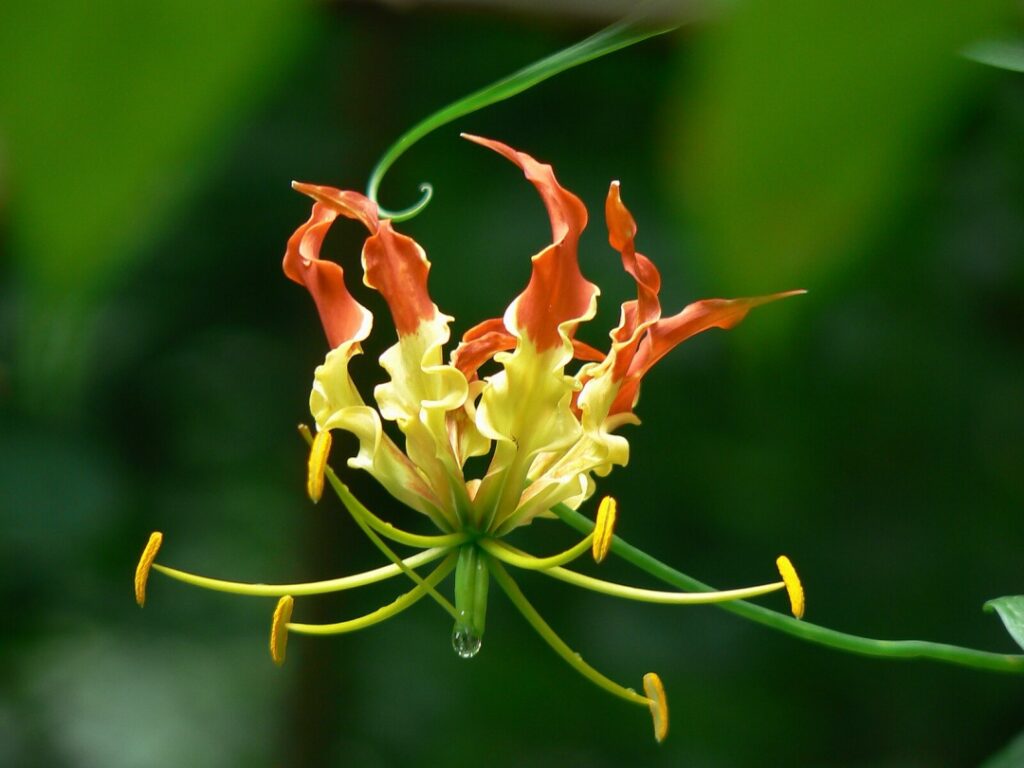
Dinesh Valke, CC BY-SA 3.0
Zimbabwe
Flame Lily
Gloriosa Superba

Dinesh Valke, CC BY-SA 3.0
General Description / Cultural Significance
The national flower of Zimbabwe is the Flame Lily, Gloriosa Superba, a symbol of purity and beauty. A native tropical, perennial, herbaceous, climbing flower, until recently, it was widely cultivated and well adapted to both the monsoon rainfalls and the dry season. The flower is showy and distinctly exotic, with reflexed tendril-like petals ranging in color from yellow to orange to red. However, despite its beauty and richness in nectar, the flower has only a light fragrance. Importantly, all parts of the plant contain colchicine and other alkaloids that are toxic when ingested. Its poison has been used in murders, suicides, and animal killings; however, it is also a medicinally potent plant traditionally used to treat a variety of conditions and diseases from intestinal worms to its use as an anecdote to snake bites. Farmers commercially cultivate the Flame Lily for its use in medicine. Fruit seeds and rhizomes are harvested and sold whole and as powder and oil extract. The flower is present in religious ceremonies and magic rituals in Zimbabwe and other African countries. Because of that, the Zimbabwe Government protects the plant from being harvested in the wild.
Climate Change / Conservation Status
Zimbabwe’s problems with deforestation have created the highest rate of tree cover loss globally, affecting biodiversity and livelihoods. Poor waste management at every level has led to excessive toxic waste. Heavy metal pollutants from the mining industry and other sources contaminate the water and crops, affecting the health of Zimbabweans.
Temperature fluctuations and natural calamities affect the flowering cycle of the Flame Lily. Farmers in the country are beginning to choose not to grow the flower as a crop because it’s slow to propagate, and the temperature’s no longer stable enough to provide the conditions the plant needs. The change in the plant’s flowering cycle means it misses its flowering season and its primary pollinator, the Table Mountain Pride butterfly. This reduces the number of plants from one year to the next.
Alternate Names
Climbing lily
Creeping lily
Glory lily
Gloriosa lily
Tiger claw
Agnishikha
Fire lily
Sources
Permanent Mission of the Republic of Zimbabwe to the United Nations.
R, R. (n.d.). Climate change extinguishes flame lily in K’taka. Deccan Herald. https://www.deccanherald.com/india/karnataka/climate-change-extinguishes-flame-lily-in-k-taka-721428.html.

